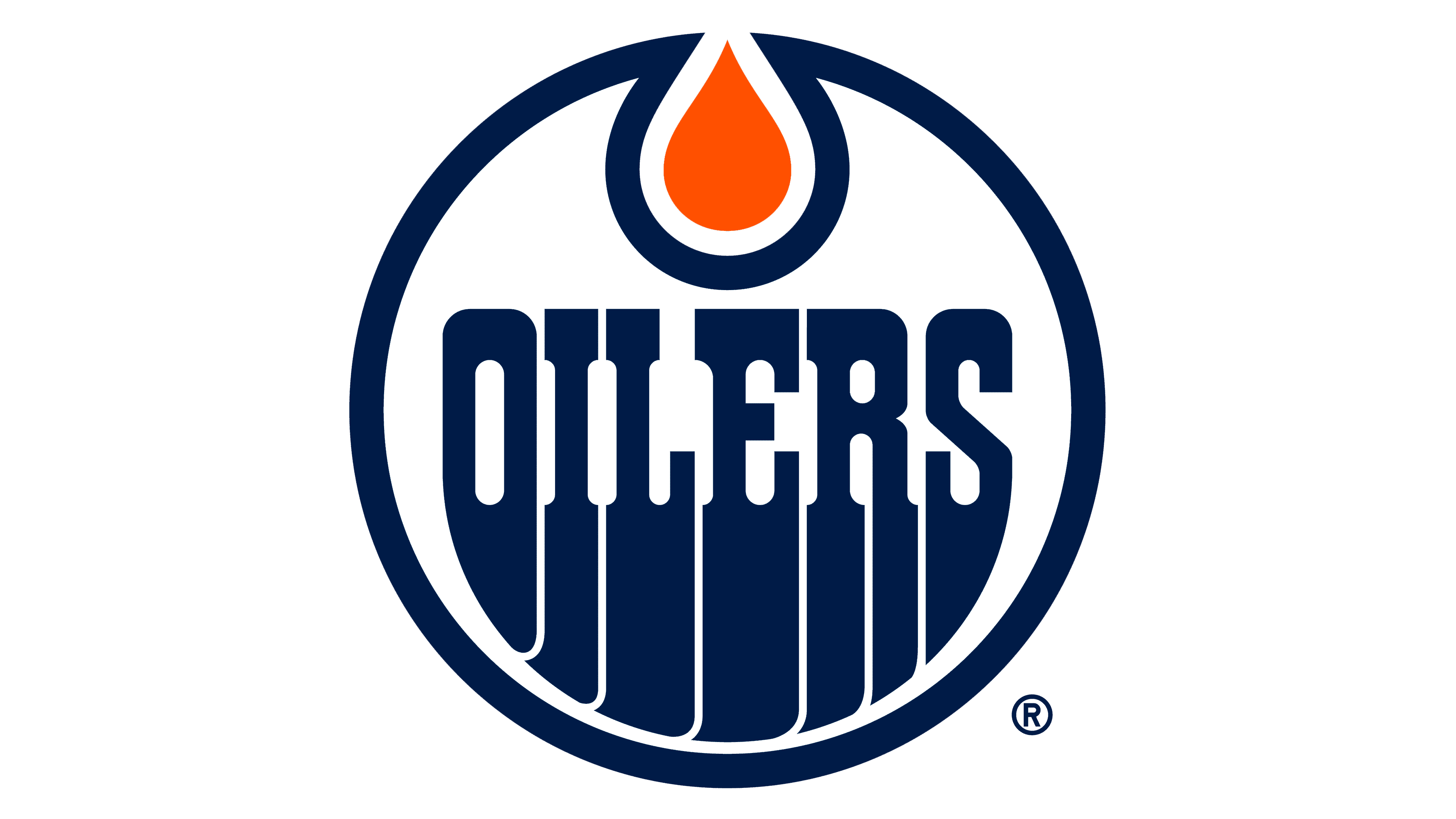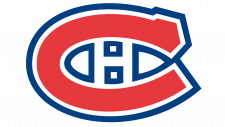Edmonton Oilers Logo
The Edmonton Oilers, an eminent NHL team from Edmonton, Alberta, are immersed in the dynamic world of professional ice hockey, aiming for sports excellence and fostering a robust bond with their fan base. Predominantly focusing on the Canadian market, they play a pivotal role in fueling the country’s hockey passion. The ownership of the Oilers rests with Daryl Katz, a renowned Canadian entrepreneur, who directs the franchise’s advancements and organizational pathways. The squad is dedicated to sustaining pinnacle levels of performance, enhancing their legacy, and magnifying fan interaction.
Meaning and history
The Edmonton Oilers, established in 1971, have a storied history filled with transformation and evolution. Initially a member of the World Hockey Association (WHA), they joined the NHL in 1979 during the WHA-NHL merger. The Oilers experienced significant alterations in ownership, notably in 2008 when Daryl Katz, a prominent entrepreneur, acquired the team, injecting a new vision and vigor into the franchise.
The Oilers’ trajectory is marked by periods of extraordinary success, particularly during the 1980s when under the stewardship of Peter Pocklington, the team clinched five Stanley Cup victories, largely attributed to the exceptional prowess of players like Wayne Gretzky. However, Pocklington’s tenure was marred by financial turbulence, culminating in the controversial trade of Gretzky in 1988.
Post-Pocklington, the Oilers navigated through varying degrees of success and challenges, both on and off the ice, marked by changes in coaching staff, player rosters, and management strategies. Katz’s acquisition marked a revitalized approach aimed at reclaiming the Oilers’ legacy of triumph and innovation.
Under Katz’s leadership, the franchise has focused on fortifying its operational base, enhancing player development, and optimizing performance. The Oilers continue to engrain their commitment to excellence, ensuring their rich heritage in professional hockey resonates through the evolving landscape of the sport.
In summary, the journey of the Edmonton Oilers is a multifaceted tale of transformation, passion for hockey, organizational reshuffles, and a relentless pursuit of glory, etched in the annals of hockey history.
1972 – 1973
The inaugural emblem for the Edmonton Oilers made its debut in 1972, showcasing the word “Oilers” encompassed within a circle, both rendered in a shade of majestic blue. The typography was conceived to mimic the appearance of flowing liquid. Above, an oil droplet in vibrant orange was encased in another circular design of blue. This illustrative representation subtly infused the essence of the team’s identity, symbolizing both the energy sector and the fluidity and dynamic nature of the sport. It was a visual metaphor for the hockey team’s name and its linkage to the oil industry, a pivotal sector in Edmonton. The contrasting hues of orange and blue were not only distinctive but added a visual flair, enhancing the overall aesthetics of the logo. The innovative approach to the design encapsulated the spirit and essence of the team, creating a lasting visual identity reflective of its roots and aspirations.
1973 – 1979
The proprietors of the club embraced the initial emblem in its original form, incorporating no modifications. This symbol functioned as the squad’s insignia for a span of six years, establishing itself as a recognizable image associated with the team. It faithfully represented the Oilers throughout numerous matches and events, becoming a symbol of unity and team spirit. The decision to retain the original design highlighted the owners’ appreciation for the logo’s aesthetic and symbolic value, believing in its ability to encapsulate the ethos and aspirations of the team during its foundational years in the competitive sports realm.
1979 – 1986
The general design of the 1980 logo predominantly sustained its original elements, marking this phase as the era of initial alterations in color dynamics. The hue of both the team’s moniker and encompassing circle underwent a transformation to a more intensified shade, mirroring the adjustments made to the oil droplet. This subtle evolution in color palette signified a nuanced shift in the visual identity of the team, reflecting possibly a deeper and more mature representation, while maintaining the foundational elements that have been associated with the team’s image since its inception, illustrating a harmonious blend of tradition and progression.
1986 – 1996
In 1987, the Oilers emblem underwent yet another transformation, experiencing alterations in its primary color scheme. The orange element transitioned to a shade significantly more vibrant, and the blue adopted a somewhat lighter tone. These color adjustments were pivotal, ensuring the logo resonated more effectively with its audience, enhancing its visibility and impact. The adoption of more radiant and lighter hues served to revitalize the brand image, injecting a sense of renewed energy and vibrancy, subtly reflecting any evolving dynamism and spirit within the team, while maintaining a visual continuity with its historical identity. This careful recalibration of colors highlights the organization’s commitment to staying relevant and engaging, adjusting its aesthetic expression in response to the changing environment and preferences, without compromising its foundational design elements.
1996 – 2011
In 1997, the Edmonton Oilers disclosed their fifth emblem iteration, likely constituting the most substantial transformation in the color scheme to date. The hues employed for both the team’s designation and the encompassing circle evolved to possess a greater depth compared to their predecessors. The blue intensified into a navy variant, and the oil droplet transitioned to a copper tone. Additionally, a slender red circular border materialized, enveloping the entire emblem. This development in visual identity signifies a thoughtful progression, incorporating more saturated and diversified colors to enrich the brand’s presence and reflect its evolving character, all while maintaining core elements to preserve its historical essence. The introduction of novel elements and nuanced color adaptations illustrate a continuous endeavor to harmonize tradition with contemporary aesthetic preferences, creating a resonant and memorable visual statement.
2011 – 2017
The emblem unveiled by the Edmonton Oilers in 2012 seemed to embody a reverential nod to its inaugural counterpart, showcasing elements reminiscent of the original design. The blue undertones underwent a modification, adopting a more vivid and lighter manifestation. The oil droplet experienced a transformation from copper to a distinct orange hue, thereby reviving the initial vibrancy. Additionally, the previously incorporated red encircling ring was omitted from the design. This adjustment marked a return to a more simplistic and unadorned depiction, possibly reflecting a desire to embrace and rekindle the essence of the franchise’s roots and its foundational visual identity, while adapting the vibrancy of the color scheme to meet contemporary aesthetic values and maintaining a connection with the team’s rich heritage and enduring legacy.
2017 – Today
The contemporary logo iteration echoes the color scheme seen in the 1996-2011 rendition. However, distinctions are apparent – it lacks the red ring and features a prominently bright oil drop. The semblance of “flowing” letters aligns with preceding emblems as alterations were predominantly in hues. Consequently, the prevailing logo in terms of appearance, dimensions, structure, and components harmonizes with the inaugural one, sanctioned in 1972. The rendition maintains its core essence, aligning with the foundational visual philosophy while adapting subtleties to stay relevant and reflective of the team’s enduring identity.


















